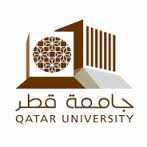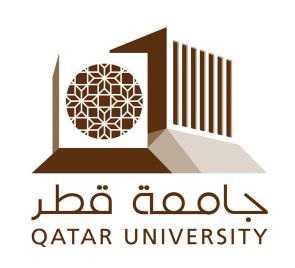Day 2 :
Keynote Forum
Trent Nessler
CEO/Founder A.C.L., LLC
Keynote: Clinical Biomechanical Analysis of The Athlete
Time : 09:00-09:30am

Biography:
Trent is CEO/Founder of Accelerated Conditioning and Learning, LLC, developer of the Dynamic Movement Assessment® (DMA®), Fatigue Dynamic Movement Assessment® (FDMA®) and 3D-DMA®. He has lectured in the area of movement assessment for over 15 years and is the author of the e-textbook Dynamic Movement Assessment: Reduce Injuries and Improve Performance. Trent holds a Bachelor’s degree in Exercise Physiology, a Master’s in Physical Therapy and a Doctorate in Physical Therapy with a focus on biomechanics and motor learning. He has been a physical therapist for over 17 years and has treated high school, collegiate, Olympic and professional athletes for over a decade. Trent has also worked with police departments, fire departments and military institutions to assist in injury prevention and improved performance in the tactical athlete.Trent has been an invited speaker to present nationally and internationally on movement assessment in the elite athlete. This has included the Southeast Athletic Trainers Association, The International Congress on Physical Activity, Centro de Educação Física Almirante Adalberto Nunes (CEFAN), The American Sports Medicine Institute’s Annual Baseball Conference, The Andrews Institutes Annual Injuries in Football Conference, Andrews Education and Research Institute, Seattle Mariners, Professional Baseball Athletic Trainers Society (PBATS), Rocky Mountain Athletic Trainers Association, American Physical Therapy Association’s Combined Section Meeting and various state physical therapy associations. Trent has also been used as a nationally recognized resource for Advance PT, The Washington Post, as well as Web MD. He currently sits on the USA Cheer Safety Council, is associate editor of The International Journal of Athletic Therapy and Training and currently serves as an injury consultant to the Brazilian Navy.
Abstract:
Every year there are over 250,000 anterior cruciate ligament injuries (ACL) in high school athletics. According to McCullough et al, over 20% have a re-rupture in 2 years and over 79% suffer osteoarthritis in 12 years. The negative impact on future joint health is significant but there is also an unspoken loss of future opportunities. According to Rugg et al, those who suffer a knee injury or ACL injury prior to their Division I college career are at an 8 fold to 800 fold increase risk of a knee injury or surgery during their college athletic career. The potential loss of future scholarship and educational opportunities highlights the importance of prevention programs. Despite all the preventative measures Dodwell et al, has shown a 1000 fold increase in the number of ACL injuries in youth athletics over the last 20 years. It has been well documented in the research that improvement in movement results in a reduction of injury risk (Stearns et al) as well as an improvement in athletic performance (Wisloff et al). In this symposium, the presenter will provide participants with the latest research in biomechanics related to non-contact injuries; describe the use of an innovative biomechanical analysis using Xbox gaming technology, its application in sports injury prevention and how implementation of this analysis in the Brazilian Military & Sports as well as in US college Division I athletics has impacted injury rates and performance.
Key words: Biomechanics, injury prevention, performance enhancement, cost containment.
- 5: Injuries and orthopedic surgeries in sports, 6: Motor skill acquisition and sports psychology
Location: Chciago, USA

Chair
Steve Middleton
Rehabilitation & Sports MediAssess treat and Condition, USA

Co-Chair
Kaukab Azeem
King Fahd University of Petroleum & Minerals, Saudi Arabia
Session Introduction
Steve Middleton
Rehabilitation & Sports Medicine Assess treat and Condition, USA
Title: Non-traumatic testicular pain due to radiculopathy: a case report

Biography:
Steve Middleton, MS, ATC, CSCS, CES, CKTP, FMT serves as the Director of Rehabilitation and Sports Medicine at Assess, Treat & Condition, an outpatient clinic in Carbondale, Illinois. He has 15 years experience in a combination of roles treating a variety of patients. He has treated with athletes from high school to college as well as professional athletes in the NFL and Olympics. He has also instructed over 1000 clinicians in continuing education courses emphasizing Fascial Movement Patterning and manual interventions. His treatment and teaching approach is very hands-on from performing manual therapy techniques to corrective exercises.
Abstract:
Objective: To present the case of a male who presented with inflammatory pelvic pain consistent with pudendal neuritis. Background: A 49-year-old male machinist presented to the sports medicine staff with chronic testicular and rectal pain of 10 years duration. Subsequently, he was diagnosed with pudendal neuritis and referred for physical rehabilitation. Differential Diagnosis: Epididymitis, pudendal neuritis, sacroiliac joint dysfunction, athletic pubalgia, testicular tumor. Treatment: Post-isometric relaxation and muscle energy techniques were used to correct a left-sided sacroiliac joint dysfunction. The patient was then progressed to therapeutic activities to restore normal mechanics to lumbo-pelvic-hip complex. Several flare-ups have occurred in the 24 months since initial treatment; however, they have been of short duration (< 2 days) and less intense. Uniqueness: Pudendal neuritis tends to affect females more than males. Typically, males with testicular pain suffer from epididymitis or some type of testicular torsion, which was not the situation in this case. Compression also is a common cause of pudendal neuritis, which did not factor in this case, making identification and treatment a complex challenge. Conclusions: The pudendal nerve passes between the sacrospinous and sacrotuberous ligaments. When there is dysfunction of the sacroiliac joint, said ligaments can cause compression of the pudendal nerve manifesting with diffuse pelvic pain and dysfunction. Many pain syndromes can be treated via the removal of the original stimulus; however, recognizing the contributing factors of the pain and dysfunction in pelvic pain in males can be a challenge for the sports medicine professional. A vigilant and unassuming approach to male pelvic pain is warranted.
Angus Mugford
Personal and Organizational Performance at IMG, USA
Title: The injured athlete performance program: a holistic approach to continued physical and mental well-being during injury
Time : 09:50-10:10

Biography:
Angus Mugford completed his PhD in Sport Psychology from the University of Kansas in 2004. He is the Director of Personal and Organizational Performance at IMG, a premier sport and performance training division of the larger WME / IMG Corporation. He has lead a team of mental conditioning coaches for a decade, working with some of the best professional athletes, coaches and aspiring juniors in the sport. His team has expanded to working with the military and corporations, and has published in academic as well as popular media across the world.
Abstract:
Nearly 44 million children participate in youth sports, with more than 4.3 million under age 14 receiving medical treatment for injuries each year (Geier, 2011). These injuries can take a toll on both the physical and mental well-being of youth athletes (Wiese-Bjornstal, Smith, Shaffer &Morrey, 2008), but can also present a unique opportunity for sport psychology practitioners to positively impact recovery and long-term learning. Researchers have noted that psychological skills such as imagery, goal setting, relaxation, and self-talk can have a positive effect on healing (Driediger, Hall & Callow, 2006). Cupal (1998) noted that practitioners need to deliver a holistic, supportive package adapted to each athlete to best promote well-being and recovery. In our own work at a youth sports academy, we developed an Injured Athlete Performance Program (IAPP) that utilizes a holistic, systemized approach to injury rehabilitation. This program includes a weekly formal and informal sports therapy and rehabilitation, modified strength and conditioning, mindset training, vision and brain training, nutrition education, and leadership training. The overall program development, as well as the specifics of the mental conditioning component of the IAPP will be shared. The IAPP focuses on fostering established mental skills such as goal setting, imagery, positive self-talk, and energy management to aid in injury recovery, return to play and overall mental well-being, but has also incorporated innovative learning techniques via technology. The process of multi-disciplinary team coordination and collaboration is a key aspect of this programs success, which will be discussed as part of this presentation.
Alex Martusiewicz
Northwestern University, USA
Title: Partial thickness rotator cuff tears: trans-rotator interval repair technique for pasta lesions
Time : 10:10-10:30

Biography:
Alex Martusiewicz is a resident physician in the Department of Orthopaedic Surgery at Northwestern University, Chicago IL. He received his M.D. degree from The University of Michigan in 2012 as well as a B.S. in Neuroscience in 2008. His research interests include sports medicine and total joint arthroplasty.
Abstract:
Background: Several techniques have been described in treating partial thickness rotator cuff tears, specifically partial articular supraspinatus tendon avulsions (PASTA). Traditionally high-grade avulsions are completed to a full thickness tear and repaired by one of several standard techniques. This study presents a trans-rotator interval technique that allows preservation of intact tendon fibers, avoids violation of the tendon, and repairs the partial tear with a titanium suture anchor. Methods: Patients diagnosed with PASTA tears on MRI underwent arthroscopic repair of the lesion. The patients were placed in a modified beach-chair position, and standard posterior and anterior portals were created. After confirming the separation of the supraspinatus tendon from the articular-sided footprint, a 5 mm double-loaded titanium suture anchor is passed through the rotator interval. A subacromial portal is then created to pass a penetrating device and pass two suture limbs to span the rotator cuff. These are subsequently tied and cut arthroscopically through the subacromial space. This secures the rotator cuff well back down to its footprint and reduction is confirmed on the intra-articular view. Post-operatively patients follow a standard RTC repair rehabilitation protocol and clinical follow up. ASES Patient Self Evaluations and Physician Assessments were obtained at an average of 28 months as well as subjective pain descriptions. Descriptive statistics were used to compare patient outcomes. Results: A total of 14 patients were evaluated (10 males and 4 females), with a mean of age 56 years old (44-74 years old). 11 of 14 patients had the procedure performed on their dominant arm. Mean clinical follow up and ASES assessment was 28 months (9-52 months). The mean ASES Shoulder Score was 95.8 out of 100 (95% CI: 91.8- 99.8). 11 of 14 patients had complete resolution of pain in their operative shoulder and 92% of patients stated that they would repeat the procedure. ASES Physician Assessment for Strength revealed an average of 4.50 in forward elevation (95% CI: 4.13-4.87) and 4.88 in abduction (95% CI: 4.63-5.12). External and internal rotations were 5 and 5 respectively among all patients post-operatively. ASES Physician Assessment for Active Range of Motion: 158 degrees of forward elevation (95% CI: 151-165), 44 degrees of external rotation with arm at side (95% CI: 40-48), 83 degrees of external rotation with arm abducted to 90 degrees (95% CI: 80-87), internal rotation to the spinous level of T10 (range L2-T8). Conclusion: There is no clear consensus in the literature regarding the optimal surgical treatment of PASTA lesions. The primary techniques for managing these articular-sided tears are debridement, trans-tendon repair, or completion of the tear and repair. This trans-interval technique provides the surgeon with a novel arthroscopic option that respects the intact tendon and the supraspinatus footprint. It also avoids creating a breach close to the rotator cuff insertion. ASES Shoulder Scores are equal if not superior to previously reported studies and 92% of patients said they would repeat the procedure again. This series of cases also provides promising results with reliable pain relief and improvements in shoulder function. Future prospective studies comparing this trans-interval technique with other previously described methods would potentially delineate the optimal method for treating PASTA lesions
Kaukab Azeem
King Fahd University of Petroleum & Minerals, Saudi Arabia
Title: Influence of resistance training on health and some selected physical variables among college males
Time : 10:45-11:05

Biography:
Kaukab Azeem is currently a Faculty at King Fahd University of Petroleum & Minerals, Dhahran, Saudi Arabia. He has strong expertise in lecturing fitness/ health education, nutrition, sport activities, weight training, and other health & physical education courses. He has produced many outstanding bodybuilders of national and international reputation, trained many top sportsmen as a fitness coach. He has strong background in fitness & bodybuilding as a former bodybuilder and was an International fitness & bodybuilding (AFBF) Coach/Judge & a university chief coach. His research work has a focus on strength training, aerobics, fitness performance, and changes in body composition. He is also serving as a supervisor for students MPhil and PhD program. He has published numerous papers in scientific journals, and also attended more than 30 international conferences around the globe including pre-Olympic congress in China 2008 and London 2012.
Abstract:
Introduction: Resistance training (RT) is also known as strength or weight training. RT is very beneficial to all athletes. (Behringer, 2010) reveals that the resistance training serves as the dynamic force for a healthy life and is the key role for improving athletic performance in various sports. The purpose of this study was to find out the influence of resistance training on health and selected physical variables among college males. Method: A group (n=30) subjects were selected for this study; their ages were between 19-22 years. The test considered for health (body composition and resting pulse rate) and selected physical variables (sit –ups test, push-ups test) to find out the performance from pre to post test. Resistance training program was employed for 12 weeks; 45 min of training per session and weekly two times; training program was consisted with 10 resistance exercises performing only on the machines based on FITT principle.For analyzing the data mean, SD and t-test were considered with the help of statistica software. The significance level was adjusted at 0.05 level. Results and Discussion: The analyzing of data reveals that the mean and S.D with regard to Body Mass Index (BMI) from pre to post test were (28.68, 7.06) and (27.43, 6.56). Resting pulse rate with mean and S.D were (69.20, 5.50) & (63.96, 4.92). The mean and S.D with regard to sit-ups test were; (19.30, 4.23) & (24.47, 5.02); regard to push-ups test with mean & S.D were (16.23, 7.36) & (21.93, 7.45). Conclusion: It is concluded that the influence of resistance training on body mass index, resting pulse rate, sit-ups and push-ups had shows significant performance from pre to post test among the participants.
Lina Majed
Qatar University, Qatar
Title: Studying movement reorganization when learning a whole-body action: Example of learning a constrained gait pattern
Time : 11:05:11:25
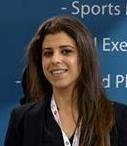
Biography:
Lina Majed is an Assistant Professor at the Sport Science Program in Qatar University. She successfully completed both her PhD (Human Movement Science) and her MSc (Motor Control and Perception) from Paris-Sud University. Her research focused on a multidisciplinary approach of human motor behaviors, specifically motor learning and human gait analysis. She examined invariant strategies in movement reorganization when learning a global motor skill and the link to metabolic optimization. She is currently working on characteristics of gait patterns in different populations (e.g., obesity) for optimal exercise prescription
Abstract:
In order to better understand the process of learning a complex motor skill, an effort was done to identify principles of movement reorganization. However, many studies refuted the existence of generalized invariant “strategies” for mastering the redundant degrees of freedom and emphasized the importance of the constraints especially those linked to the task itself. We aimed to identify common characteristics in movement reorganization when 7 participants practiced (4 sessions) a new gait pattern at speeds higher than that of the preferred walk-to-run transition by placing biomechanical constraints on distal lower joints (i.e. racewalking regulations). Movement analysis was performed on kinematic variables computed from a whole-body model (VICON). First, using ANOVAs we assessed practice-related changes in spatiotemporal parameters, angular displacements and relative phases (inter-/intra-limb coordination). Results indicated an immediate reorganization incoordinative patterns (e.g., relative phases and stride frequency) accompanied by a general decrease in the initial movement variability (i.e., standard deviation of many key variables). However, the large number of studied variables made it difficult to put forward common “strategies” used by participants. Second, we ran principal component analyses (PCA) on 8 major angular displacement variables for all participants, trials and sessions. PCA were used to evaluate the coupling in the motion of body segments that synchronize in different components (dimensions), each believed to be controlled by the CNS as one unit. Results indicated that the majority of participants immediately recruited an additional task-specific control dimension compared to normal walking. Moreover, this analysis revealed a gradual synchronization of the knee joint motion with that of the early established pelvis transverse plane rotation.
Namal Perera
Bradford Royal Infirmary, UK
Title: Does magnetic resonance imaging delay diagnosis of symptomatic acute anterior cruciate ligament rupture?

Biography:
Mr. Perera namal is working in the dept of Orthopaedics, Anterior cruciate ligament (ACL)
Abstract:
Anterior cruciate ligament (ACL) tears are common injuries. Clinical diagnosis has often proved unreliable and MRI has often been used because of its high specificity and accuracy. Objective: ascertain the role of MRI in the diagnosis of suspected ACL injury and assess whether it may delay diagnosis. Methods: retrospective analysis of 78 patients undergoing primary ACL reconstruction following acute injury. Results: MRIs were performed in 72 of 78 patients (92.3%); MRI scan was used for gaining the diagnosis in 47.4% of patients, the remainder being diagnosed clinically. In the MRI-diagnosed group, the mean time to MRI was 75 days, with total delay to patient receiving diagnosis of 110 days. Patients in the MRI-diagnosed group waited longer for diagnosis and attended more outpatient appointments. Conclusions: despite evidence to the contrary, MRI is over-used for obtaining diagnosis or confirming isolated acute ACL injury. MRI is a largely unjustified cost and should be avoided in favour of clinical review by a specialist at an appropriate juncture.

Biography:
Ervin Meqikukiqi is studying in University of Medical Sciences Rezonanca (Prishtine-Kosovo). He has attended many physiotherapic courses, and is also a certified personal trainer by IFA. He had seminaric presentations (physiotherapy themed), located in Albania. The trainings/congress that he attended are: Physiotherapy in sports pathology, Herniated disc and spondyloarthritis, Effects of massage therapy, Rehabilitation in sports injury, certified in the Kinesio Taping. He also attended the National Physiotherapy Congress in Tirana with oral presentation “Rehabilitation after ACL and Meniscus Surgery”.
Abstract:
It is difficult to assess how athletes can best modify their movements to prevent noncontact ACL injuries. Speaking with an athletic trainer, physical therapist, or sports medicine specialist is a good place to start. Recent research has allowed therapists and clinicians to easily identify and target weak muscle areas (e.g., weak hips, which lead to knock-kneed landing positions) and identify ways to improve strength and thus help prevent injury. In addition, other risk factors such as reduced hamstring strength and increased joint range of motion can be further assessed by a physical therapist or athletic trainer to improve performance-or rehabilitation efforts after an injury has occurred. Current studies also demonstrate that specific types of training, such as jump routines and learning to pivot properly help athletes prevent ACL injuries. These types of exercises and training programs are more beneficial if athletes start when they are young. It may be optimal to integrate prevention programs during early adolescence, prior to when young athletes develop certain habits that increase the risk of an ACL injury. This is a 20 minute program designed to reduce the risk of tears of the Anterior Cruciate Ligament. It should be started at least four and preferably six weeks prior to start of competition. Ideally it is done five times per week preseason and three times per week in season. The coach or trainer must constantly observe athletes during these exercises to correct and maintain proper technique. Once the athletes understand the principles, they can monitor and coach each other. Four phases: Warm-up, Strengthening, Plyometrics, Agility and Balance.
- Exercise & Physical Therapies for Multiple Diseases
Location: Chicago, USA
Session Introduction
Zsuzsanna Kneffel
Qatar UniversityQatar
Title: The effectiveness of a ten-week exercise intervention to reduce cardiovascular risk factors amongst young male Qatari adults

Biography:
Dr. Zsuzsanna Kneffel received her PhD in Educational and Sport Sciences from Semmelweis University, Faculty of P.E. and Sport Sciences (2008), her Master degrees are in P.E. and Adapted P.E. (1998). Dr. Kneffel is an Assistant Professor at Qatar University Sport Science Program since, 2011. Her research interest focused on cardiovascular adaptation to training while her current research focuses on screening cardiovascular risk factors among Qataris. She has 23 articles in peer-reviewed journals, 6 book chapters and several presentations on International Conferences. She is a qualified ISAK measurer, and certified Kinesiology taper.
Abstract:
Rapid development is Qatar in recent years has led to numerous changes, particularly the increased prevalence of lifestyle related health risks, with almost 50% obesity rates amongst Qataris of all ages. We investigated the effects of a ten-week exercise training program aimed at young Qatari male adults, on a number of cardiovascular risk factors (CVR). With institutional approval, we screened 89 Qatari young adult male volunteers from Qatar University for CVR factors of hypertension indicated by systolic (SBP) and diastolic (DBP) blood pressure, overweight and obesity indicated by body fat percentage (%BF), body weight (BW) and body mass index (BMI). 20 participants (23% of total number) were identified with one or more risk factors (hypertension and overweight), and were enrolled to follow a ten-week recreational-type exercise training program. The training involved 30-40 min of either walking, cycling, jogging and swimming at an exercise intensity corresponding to 50-85% of each participant’s maximum heart rate, on 3-5 times/week. The intervention significantly reduced BW (93.4±14.1 vs. 86.7±14.5, p<0.05), BMI (31.0±3.6 vs. 28.8±3.9, p<0.05) and BF% (31.2±9.0 vs. 21.2±4.4, p<0.05). Furthermore, there was a significant reduction in diastolic blood pressure (83.4±5.3 vs. 76.0±9.2 mmHg, p<0.05), and a non-significant reduction in (133.8±10.7 vs. 130.5±9.1 mmHg, p = 0.516). This recreational-type exercise intervention was effective in substantially reducing the CVR indices. However, the alarmingly high prevalence of sedentary-related CVR amongst Qatari young adult males, especially those related to obesity, overweight and hypertension necessitate further public health interventions in this age-group as an early prevention strategy
Biography:
Abstract:
Type 1 diabetes mellitus is an autoimmune disease occurring in the pancreatic islets. type 1 diabetes usually have been considered as multifactorial disease in which environmental risk factors trigger an immune -mediated destruction of the pancreatic beta cells in genetically susceptible persons The aim of this study was to investigate the associations of type 1 diabetes mellitus with maternal, neonatal and environmental risk factors. Subject and methods: a case-control study was conducted on adolescent school students aged 12-18 years old. Cases were adolescent school students who were diagnosed with type 1 diabetes mellitus and the controls were non-diabetic students (age matched) were randomly selected from the same school. Results: The study found that, there was a significant association between type 1 diabetes mellitus and participant’s sex, history of childhood viral (mumps, measles and varicella) infections, short exclusive breast feeding, early neonatal illness, family history of type1 diabetes mellitus, pre-eclampsia, gestational diabetes, maternal age (p < 0.05). while there was no significant cant association between type 1 diabetes mellitus and birth order, route of delivery, family history of type 2 diabetes mellitus, family history of thyroid disease and maternal coffee or tea drinking during pregnancy(p> 0.05). Conclusion: From this study it can be concluded that certain maternal, neonatal and environmental risk factors were associated with the development of T1DM
Soghra Nikpour
Iran University of Medical Sciences Iran
Title: The effect of exercise on quality of life in postmenopausal women referred to the Bone densitometry
Biography:
Abstract:
Background: One of the most critical stages of women’s lives is menopause and one of the aims of health for all in the 21st century is the improvement of the quality of life. Aim and Objective: The aim of this study was to determine the effect of exercise on quality of life in postmenopausal women. Materials and Methods: This study was designed by a randomized-controlled trial. Eighty volunteer postmenopausal women who experienced the menopause period naturally and have been taking hormone replacement treatment (HRT) were divided into two groups randomly (exercise group n = 40, control group n = 40). The Nottingham Health Profile (NHP) was used to assess quality of life in both groups before and after 8 weeks. The exercise group participated in an exercise program, which was composed of sub-maximal aerobic exercises for an 8-week period 5 times a week. Quality of life in two groups was compared at the end of 8 weeks. Results: The results showed that there was a statistically significant difference in the exercise group for the NHP indicating an improvement in the quality of life (P < 0.05). Conclusion: We concluded that quality of life on postmenopausal women could be improved with a regular and controlled exercise program of 8 weeks. Thus, implementing appropriate educational programs to promote the quality of life in postmenopausal women is recommended. Key Words: Exercise, menopause, quality of life
Paul Sung
University of Scranton, USA
Title: Kinematic characteristic of postural stability during one leg standing in athletes

Biography:
Paul Sung is Associate Professor in Department of Physical Therapy at the University of Scranton, Scranton PA. He received his PhD degree in Physical Therapy from Nova Southeastern University in Fort Lauderdale, Florida in 2004. He also received his DHSc degree from the University of St. Augustine in St. Augustine, Florida in 1999. He conducted his research fellowship at the Iowa Spine Research Center, Biomedical Engineering Department at the University of Iowa in Iowa City, Iowa from 2001 to 2003. He is a member of the International Society for the Study of the Lumbar Spine as well as the American Physical Therapy Association. His research interests include the mechanisms of chronic low back pain, sports injury mechanism, spine biomechanics, and non-operative spine care and its clinical application to neuromuscular control.
Abstract:
This presentation is to introduce evidence based kinematic changes in the lumbar spine in subjects with and without low back pain (LBP) while standing on one leg with and without visual feedback. The lumbar stability index includes relative holding time (RHT) and relative standstill time (RST). Even though a number of studies have evaluated postural adjustments based on kinematic changes in subjects with LBP, lumbar spine stability has not been examined for abnormal patterns of postural responses with visual feedback. The stability index of the core spine significantly decreased in both RHT and RST, especially when visual feedback was blocked for subjects with LBP. The interaction between visual feedback and trunk rotation indicated that core spine stability is critical in coordinating balance control. A trunk muscle imbalance may contribute to unbalanced postural activity, which could prompt a decreased, uncoordinated bracing effect in subjects with LBP. As a result, kinematic rehabilitation training could be used in the prevention of postural instability. The effect of visual feedback on kinematic changes, such as RHT and RST, has not been carefully considered in subjects with LBP. Statistically significant and clinically relevant differences in postural stability and visual feedback were observed between subjects with and without LBP during the one leg standing test. Subjects with LBP have decreased RHT and RST when visual feedback is blocked. As a result, the early detection of kinematic imbalance might be required to understand compensatory mechanisms and postural adjustments in subjects with LBP.
Paulo Marchetti
Supervisor of Human Movement Sciences Graduate Program at UNIMEP
Title: ANALYSIS of the BACK squat with and without knee wrapS

Biography:
Paulo Marchetti is Supervisor of Human Movement Sciences Graduate Program at UNIMEP and has over 16 years experience in researching stretching, resistance training and biomechanics. He is Post-doctoral Research Fellow in the Institute of Orthopedics and Traumatology at Medical School (USP), PhD in Biomechanics and Motor Control and MSc in Kinesiology (Biomechanics ans Motor Control) at USP, Specialist in Exercise Physiology and Physical Training at UNIFESP, and he has over fifty research publications. He is a NSCA member, Cybex Institute Member, and Chief Editor in section of Sports Medicine of the International Archives of Medicine.
Abstract:
Knee wraps are typically worn to both support the knee joint and gain mechanical advantage during the back squat exercise, and they are also often used to increase the load lifted or the number of repetitions performed with a given load. In general, when the knee is flexed against an external resistance during the back squat exercise, the knee wrap(s) elastic material is stretched during the eccentric phase, and returns this energy during the concentric phase. This potential accumulated energy is transferred to the lifter and added to the strength of the movement, this additional force is known as carry-over. Therefore, wearing knee wraps may affect traditional movement patterns by increasing mechanical output during the back squat exercise, and consequently change exercise technique. Additionally, since the back squat exercise is a multi-joint exercise, any effect on the extensor knee torque may alter the level of internal torque in both the knee and hip joints, and this may result in a different bar displacement pattern.
- Motor Skill Acquisition and Sports Psychology
Location: Chicago, USA
Session Introduction
Abdussalam Kanniyan
King Fahd University of Petroleum & Minerals, Saudi Arabia
Title: Effect of Hypoxic Training and Pilates Training on Selected Bio Motor and Skill Related Variables of University Level Soccer Players
Biography:
Abstract:
Introduction: Football or soccer is the most popular sporting event in the world. It is the king of sports. There is not a single country in the world where soccer is not played in some form or other, and it is popular particularly among the youth of the world. “Soccer is the game of educated feet. Hypoxic (low-oxygen) workout makes the oxygen delivery system more efficient, increasing the strength and endurance up to 40 percent. Pilates training is a physical fitness regimen of repeated exercise and is a holistic approach to well-being and a lifelong process of refinement. Method: Participants: Thirty six (N=36) male students who were members of their concerned university soccer team are selected as the subjects. Procedure and Task: They were divided randomly into three groups. Group-1 (hypoxic training), Group-2 (Pilates training) and Group-3 acted as control group. The duration of training was 12 weeks (1 hour per day, four days /week). Hypoxic training and Pilates training are selected as the independent variables where bio-motor variables and soccer skill variables are selected as the dependent variables. Mor-Christian general ability soccer test is used to take soccer skills of subjects. Dependent‘t’ test and ANOVA were used with F-ratio and Scheffe’s post hoc test as needed. Results: The ‘t-test’ scores of group-1, group-2 and group-3 were for speed (9.26,4.69,0.06) explosive power (3.89,4.27, 0.06), dribbling (5.43,6.41,0.03), passing (7.47, 4.44, 0.20)and shooting (11.09, 12.18, 0.52). Discussion & Conclusions: In all the selected dependent variables, the t-values of both experimental groups were bigger than the table value where the same for control group was lesser than the table value. Hence, the result is significant for the selected variables of study
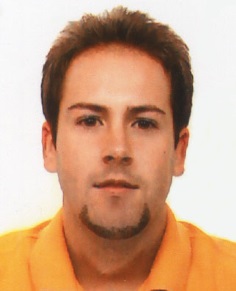
Biography:
Dr.Joel Manuel Prieto Andreu has completed his PhD at the age of 28 years from Murcia University and is currently working as CEU University Cardenal Herrera. He has published more than 10 papers in reputed journals and he has been publishing several articles in a digital magazine called foroatletismo.com
Abstract:
The objective of the study was to find out how affects the time of evaluation of the reasons and the psychological state of popular runners, in the days before or on the day of the race. Got a sample of 473 popular runners (374 men and 99 women) participating in two popular 10 km races and half marathon, men had a mean of age 30,28 and women an average of age of 31,70. For the evaluation of the personal variables and socio-demographic it was prepared ad hoc self-report questionnaire; and CSAI-2R was used to evaluate anxiety pre-competition (Andrade, Lois & Arce, 2007). The study is based on a quantitative methodology, and its design was descriptive and observational (Thomas & Nelson, 2007). The results indicate that runners who filled out the questionnaire before the race day have higher scores on cognitive anxiety, and runners who completed the questionnaire on the same day had higher scores in somatic anxiety, confidence, satisfaction, attraction to the competition, self-esteem, sense of life, search for recognition, convenience and competition. It discussed on the relations of these variables with other personal, sports and socio-demographic, as well as the applicability of the results and are designated some conclusions of the study.
Hamideh Abrisham Kar
Islamic Azad University, Iran
Title: Relation between internal and external motivation and anxiety in Archery elite athletes

Biography:
Hamide Abrisham kar has completed his BA at the Islamic Azad University and MS.c studies from Tehran University departmant of sport psychology. His research focuses on the area of applied sport psychology, Mental training for ongoing high level performance; also, he focuses on the area of human adaptation in sport and exercise. In recent years, he has focused on motivation in coaches. Hamide is a national archer in Iran and she was member of the Iranian national team in last years, moreover, she is International archery Coach. In his ever-vanishing spare time, Ali enjoys playing (poorly) and watching vollyball, (road) bicycling, and hiking
Abstract:
The main objective of this study is figure out Relationship between internal and external motivation, and anxiety (trait-state) in young Archery athletes In order to understand the motivation of athletes must realize their needs. Usually Not satisfied needs Become the targets, there for to help athletes achieve their goals could be key to motivation The main objective of this study is figure out Relationship between internal and external motivation, and anxiety (trait-state) in young Archery athletes the confusion that arose in the field Federation, Led us to investigate the intrinsic and extrinsic motivation and their anxiety. Samples in this study were 90 female athlete with a mean age of 15.3 IMI intrinsic motivation questionnaire Which includes the following measures, interest, enjoyment, perceived competence, effort, value and importance to measure intrinsic motivation And Anxiety Inventory STAI is used for anxiety, that The questionnaire was given to the athletes by coaches This study applicable and The questionnaire method is descriptive The purpose of this research is to find the relationship between intrinsic motivation and anxiety, Also comparisons between trait and competitive anxiety. The correlation coefficient is a statistical method. The participants had very low intrinsic motivation and extrinsic motivation was very high state of anxiety. When Athletes are less motivated causes a lot of anxiety in their competition especially, when their trait anxiety was too low, Coaches should enhance intrinsic motivation of Youth and created the field for them.
Jack Blake
University of Central LancashireUK
Title: Is the key to happy and confident athletes already within them? How positive psychology can be a game-changer.
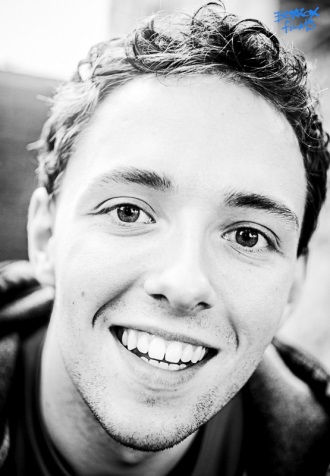
Biography:
Jack Blake has completed his MSc in Sport and Exercise Psychology at the age of 22 from the University of Central Lancashire and is currently undertaking training to become a chartered Sport Psychologist. He is the owner of Mind.Set.Action and has worked with England Ladies Soccer, UK Triathlon and the University of Central Lancashire. He has also developed his own range of sport psychology seminars which have been a success across the UK.
Abstract:
The dream of becoming professional is a goal many athletes will have but with the media spotlight and pressure to succeed intensifying the psychological aspect of being a sportsperson is becoming more prominent. Over half of collegiate athletes have reported that factors such as the pressure to win, anxiety and fear have significantly affected their emotional health and sporting performances (Humphrey, 2000). This pattern is mirrored in the professional leagues where studies have shown that 25% of professional soccer players suffer from depression or anxiety during their careers, compared to an 18% rate found in the US army (Gouttebarge, 2014). Organisations understand that an athlete’s physical health is important as they hire the best medics and physiotherapists, but often neglect the psychological well-being of athletes. To an athlete it can seem as if there is no way to escape the stress. But what if the solution to their problems is already within them? Positive-psychology is a new approach that helps individuals identify their personality strengths and uses these to boost well-being and confidence. Research shows positive-psychology interventions are effective at significantly improving happiness levels and decreasing depression, leading psychologists to begin implementing these ideas into the sporting world. Studies have also suggested that positive-psychology can help athletes to reduce the effects of anxiety arising from training and competitions, allowing athletes to perform to their full potential. These techniques are particularly important because they have the potential to boost mood and overall well-being at the individual athlete, team and organisational level.
Biography:
Abstract:
How an athlete responds and recovers from an injury varies with each unique situation. One’s reaction to their sport injury can be an influential determinant of their return to sport (Ahern & Lohr, 1997; Podlog & Eklund, 2005; Podlog & Eklund, 2009; Podlog, Lochbaum, & Stevens, 2009; Walker, Thatcher, & Lavallee, 2007). Those working directly with injured athletes are in a unique position to administer both physiological and psychological rehabilitation. Research has surfaced regarding the need of athletic trainers to also focus on the mental aspects of recovery (Barefield & McCallister, 1997; Gordon, S., Milios, D., & Grove, J.R., 1991; Grindley, E.J. & Zizzi, S.J., 2005). The objective of this narrative study was to focus and uncover the perceptions of coping with an injury among 4 NCAA Division I athletes and also the athletic trainers with whom they work. A thematic structure of the lived experience of an injury was revealed. The concept of ‘perceptual continuity’ was introduced and the relationship between the lived experiences of the injured student-athlete and the perceptions of these experiences by their athletic trainer provided a new and interesting insight into the psychological rehabilitation process. With this investigative research, health and sport professionals will be able to approach both the mental and physical sides of rehabilitation with a better understanding of the emotions and thoughts of their athletes.
- Sports Nutrition and Sports Medicine
Location: Chicago, USA
Session Introduction
Jennifer Seyler
Chicago Food and NutritionUSA
Title: Translating and promoting scientific findings: getting the attention of your audience

Biography:
Jennifer Seyler has nearly 15 years’ experience in nutrition and fitness communications. As a dietitian and personal trainer, she has leveraged her knowledge to help 40 plus brands, including Gatorade and Abbott Nutrition, translate science and spread respective messages to the audiences that matters most to them. She has published more than 20 scientific articles and has been cited as an expert in publications such as Parents, iVillage and Today’s Dietitian. She is a Chicago Food and Nutrition Network Board Member, the Illinois Academy of Nutrition and Dietetics President-Elect, and the Health Influencer Communications Vice President for FleishmanHillard
Abstract:
Science is a foundational building block that helps guide consumer nutrition and physical activity recommendations. But these guidelines are often misrepresented or misunderstood, which can lead to confusion. Health professionals have a duty to provide evidence-based information to ensure user safety and maintain credibility. But, no matter how ‘late breaking,’ ‘novel’ or ‘supported’ the science is, if the audience doesn’t hear what you are saying or what you mean to say, it isn’t going to get applied or it may be applied improperly. To ensure your audience understands the science and the best way to apply it, you – the health professional – need to understand the best ways to evaluate, translate and promote the science in a way that ensures the information is going to the person intended, is as clear as possible, and maintains the credibility it deserves. This presentation will discuss 1) what the media considers news, 2) the nutrition/fitness landscape, 3) the importance of knowing your audience, and 4) ways to evaluate, translate and promote science.





